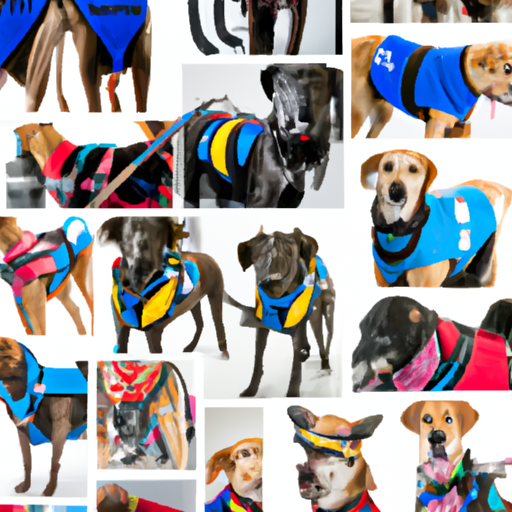1. Guide Dogs
You may be familiar with one of the most commonly recognized types of service dogs – guide dogs. These dogs are specifically trained to assist people who are visually impaired or blind. They provide a vital service by helping their handlers navigate their surroundings safely.
There’s more to being a guide dog than just being able to follow commands. They’re also taught intelligent disobedience – the ability to ignore a command if it would put their handler in danger. For example, if there’s a car coming, the dog would refuse to walk forward, even if their handler tells them to.
Breeds commonly used as guide dogs include:
– Labrador Retrievers
– Golden Retrievers
– German Shepherds
2. Hearing Dogs
Hearing dogs are another type of service dog that provides an invaluable service to individuals who are deaf or hard of hearing. These dogs are trained to alert their handlers to specific sounds like doorbells, smoke alarms, and even the sound of someone calling their name.
Breeds commonly used as hearing dogs include:
– Labrador Retrievers
– Golden Retrievers
– Cocker Spaniels
3. Mobility Assistance Dogs
If you’re a caregiver for someone who has physical disabilities or mobility issues, then you might consider getting a mobility assistance dog. These dogs are trained to perform tasks like opening and closing doors, picking up dropped items, and even help their handlers get dressed.
Breeds commonly used as mobility assistance dogs include:
– Labrador Retrievers
– Golden Retrievers
– Bernese Mountain Dogs
4. Diabetic Alert Dogs
Imagine having a dog that could alert you to changes in blood sugar levels. That’s exactly what diabetic alert dogs do. They’re trained to detect changes in their handler’s blood sugar levels and alert them so they can take action.
Breeds commonly used as diabetic alert dogs include:
– Labrador Retrievers
– Golden Retrievers
– Poodles
5. Psychiatric Service Dogs
Last, but certainly not least, are psychiatric service dogs. These dogs assist individuals with mental health disorders like depression, anxiety, and post-traumatic stress disorder (PTSD). They’re trained to perform tasks that can help their handler during a mental health crisis.
Breeds commonly used as psychiatric service dogs include:
– Labrador Retrievers
– Golden Retrievers
– Boxers
As a caregiver, it’s essential to note that the breed is not the only factor that determines a good service dog. The dog’s temperament, size, and energy level also play a crucial role.
| Service Dog Type | Common Tasks | Common Breeds |
|---|---|---|
| Guide Dogs | Navigating surroundings | Labrador Retriever, Golden Retriever, German Shepherd |
| Hearing Dogs | Alerting to specific sounds | Labrador Retriever, Golden Retriever, Cocker Spaniel |
| Mobility Assistance Dogs | Assisting with physical tasks | Labrador Retriever, Golden Retriever, Bernese Mountain Dog |
| Diabetic Alert Dogs | Alerting to changes in blood sugar | Labrador Retriever, Golden Retriever, Poodle |
| Psychiatric Service Dogs | Assisting during mental health crises | Labrador Retriever, Golden Retriever, Boxer |
Frequently Asked Questions
1. What is a service dog?
A service dog is a dog specifically trained to perform tasks that assist individuals with disabilities.
2. Can any dog become a service dog?
While any breed can potentially become a service dog, not all dogs have the temperament or ability to do so. Training a service dog requires a significant investment of time and resources.
3. How can I get a service dog?
You can get a service dog through a reputable organization that trains and places service dogs, or you can train one yourself with the help of a professional trainer.
4. Can service dogs go anywhere?
Yes, under the Americans with Disabilities Act (ADA), service dogs are allowed in any public place their handler goes.
5. Do service dogs ever get to play?
Yes, service dogs get plenty of time to play and relax when they’re not working. They are, after all, still dogs!



